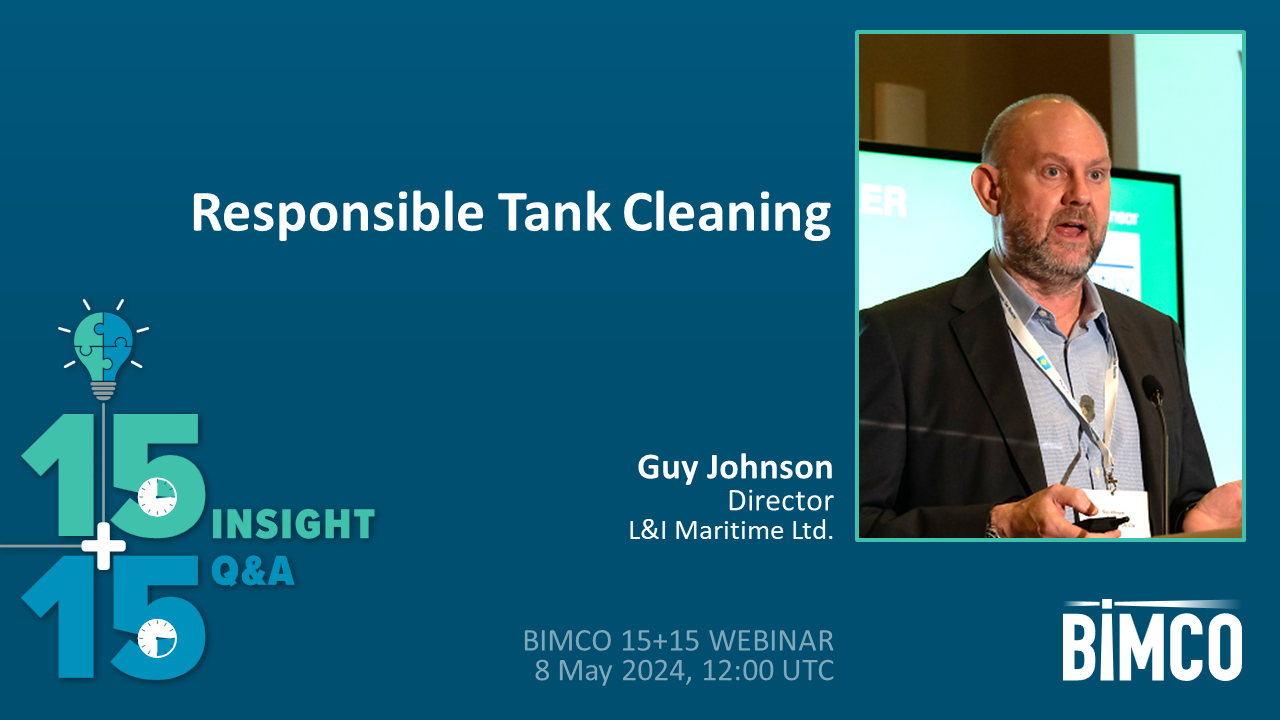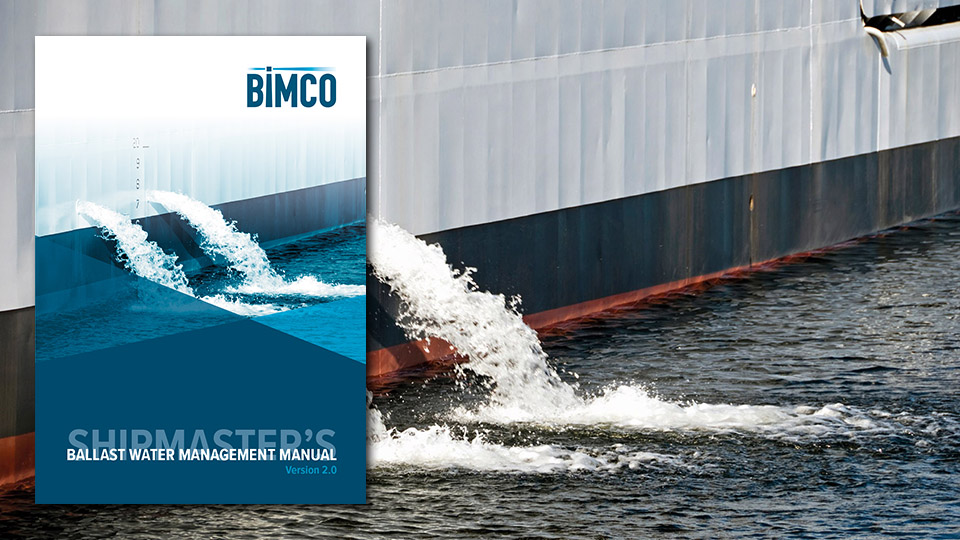Ballast Water Management - the deadline 080917 is approaching
Overview
The revised implementation of the BWM Convention and the ships’ D-2 compliance date was agreed at the International Maritime Organization (IMO) Marine Environmental Protection Committee’s (MEPC) 71st session held in early July and will be circulated to IMO member states for final adoption at MEPC 72 in April 2018.
The revised implementation schedule is laid out as follows:
- A ship constructed on or after 8 September 2017 shall conduct Ballast Water Management that at least meets the standard described in regulation D-2, which in most case would require the installation of a type approved Ballast Water Management System.
- Ships constructed before 8 September 2017 must comply with the D-2 standard at the first MARPOL International Oil Pollution Prevention (IOPP) certificate renewal survey completed on or after 8 September 2019.
- For ships constructed before 8 September 2017 where the IOPP renewal survey is completed on or after 8 September 2014 but prior to 8 September 2017, then D-2 compliance will be required at the first IOPP renewal survey.
- For ship where the IOPP renewal survey not is completed between 8 September 2014 and 8 September 2017, then D-2 standard compliance will be required at the second IOPP renewal survey conducted after 8 September 2017. This only applies in cases where the first MARPOL IOPP renewal survey is completed after 8 September 2017 and prior to 8 September 2019 and an IOPP renewal survey was not completed between 8 September 2014 and 8 September 2017.
- Ships constructed prior to 8 September 2017 and not subject to a MARPOL IOPP renewal survey, will have to be D-2 standard compliant not later than 8 September 2024
Please click here for viewing or downloading an image for clarification of the above.
Critical issues
- BW to be discharged on or after 8 September 2017 must be either D-1 or D-2 compliant*
- BWM plan must be implemented on board both for performing D-1 and/or D-2 if applicable (all BW operations must be carried out in accordance with the plan)**
BWM training to be carried out for selected officers and crew
*Please note the draft IMO circular “Application of the BWM Convention to ships operating in sea areas where ballast water exchange in accordance with regulations B-4.1 and D-1 is not possible”
**The IMO Circular BWM.2/Circ.40 on Issuance of Ballast Water Management Certificates prior to entry into force of the BWM Convention and Ballast Water Management Plans approved according to resolution A.868(20) provides that the Contracting Governments to the BWM Convention can issue International Ballast Water Management Certificates prior to entry into force of the Convention.
This is providing it is annotated to state that validity begins from the entry-into-force date, combined with a statement issued to the Company when the BWM Plan was received, thereby allowing the vessel to trade for three months with an unapproved BWM Plan on board.
It is recommended that ships in the above situation have onboard a copy of the IMO Circular BWM.2/Circ.40 on Issuance of Ballast Water Management Certificates prior to entry into force of the BWM Convention and Ballast Water Management Plans approved according to resolution A.868(20).
The following BWM related documentation should be on board before 8 September 2017:
- An International BWM Certificate
- A properly kept record book
- Evidence of relevant BWM reporting
- Ballast Water Management Plan (see above re IMO Circular BWM.2/Circ.40)
Recommended associated initiatives
- Updating the ships’ Safety Management System in terms of the BWMP
- BWMP familiarisation and training relevant officers and crew
- Carry on board if applicable a copy of the installed BWMS’s type approval certificate
- Contingency plan covering noncompliance with the BWMP or Ballast Water Management System (BWMS) failure*
- How to handle BWM sampling by authorities
*Please refer to the IMO Draft Guidance on Contingency Measures under the BWM Convention
Inspection and control
The IMO Port State Guidelines on Ballast Water Management specify a four-stage inspection approach and recommend that every effort should be made to avoid any undue delays to the ship:
Stage 1 – Initial Inspection
Involves check of the International BWM Certificate, the BWM record book and a check of the familiarity of the designated officers and crew with the system. If this check triggers suspicion or doubt, then the PSC may proceed to Stage 2.
Stage 2 – More detailed inspection
A more detailed inspection to check if the BWM operation has been carried out according to the BWM Plan.
Stage 3 – Sampling and indicative analysis
This will be an indicative analysis to see if the D-2 standard is met.
Stage 4 – Detailed analysis
A representative sample will be tested to ascertain compliance with the D-2 standards
The IMO Ballast Water Management Convention article 9.1 .c allows PSC inspectors to carry out ballast water sampling during PSC inspection to confirm compliance with the Convention. The Guidance on ballast water sampling for PSC inspectors trial use and the following recommendations have been agreed:
- The trial period will be for two (2) to three (3) years following entry into force of the Convention.
- During the trial period, Port States should refrain from applying criminal sanctions or detaining the ship based on only sampling.
- The methods considered mature enough for use in the context of port state control are identified in the trial.
IMO Ballast Water Management Sample Data Form
The following minimum information is recommended for sample documentation:
| Sampling date | |
| Ship particulars | Name of ship: Distinctive number or letters Port of registry: Gross tonnage: IMO Number: Date of construction: Ballast water capacity: |
| Identification of sampled tank* | |
| Type and position of sampled tank* | |
| Capacity of sampled tank* | |
| Type of ballast water management undertaken | (type of exchange or treatment) |
| Make of ballast water management system | |
| Date of ballast water management undertaken | |
| Sample identification code | (including number of replicate) |
| Sample type | (larger, smaller plankton, microbes) |
| Sampling techniques used | net (including depth of vertical net haul, net opening size, mesh size) pumps (including sampling depth, pumping capacity in l/min.) bottle (incl. sampling depth, bottle capacity in l.) specify other sampling technique if used |
| Sampling time/start | |
| Sampling end time | |
| Origin of water sampled* | (lat/lon/port) |
| Type of sampling access point | |
| Location of sampling access point | |
| Water volume sampled | (by volume) |
| In case sample is concentrated on board specify | (μm) |
| filter or net sizes (if applicable) | |
| Preservative (if used) | |
| Transport to laboratory | cooling container, dark storage, etc. |
| Sample results |
It will be critical for ship’s crew and officers to monitor the sampling and check if the above sample data form is filled in with correct data as well at taking a copy of the form for the ship’s file.
Chain of Custody Record relating to IMO Ballast Water Management Sampling
- In the context of compliance control, it is advisable to maintain a chain of custody records for the samples collected.
- Information to be included should contain a complete record of those handling the sample from the time of the sampling onwards.
- The chain of custody should also include date, ship identification, sample identification code, and a list of people who have handled the sample, including the person who takes the sample, dates and time, and the reason for sample transfer and the integrity of the sample on transfer.
Please note that if BWM sampling is carried out and BW samples are taken ashore for laboratory analysis, the testing of the samples’ condition of such samples is out of the ship’s control as soon as the samples leave the ship. The guidance for analysing ballast water samples specifies that the samples should be analysed live within six hours or treated in such a way to ensure that proper analysis can be performed. This means in practice that the ship can’t take its own sample and store them on board for later analysis and use as evidence of compliance.
For further information please refer to the IMO Circular MEPC.173(58) Guidelines for ballast water sampling (G2)
If the ballast water sampling operation is observed to be carried out incorrectly, this should be stated in a written protest and noted in the Ballast Water Record book.
Common Ballast Water Management Acronyms
- AIS - Aquatic Invasive Species
- AMS - Alternate Management System (US)
- BW – Ballast Water
- BWDS - Ballast Water Discharge Standard (US)
- BWM - Ballast Water Management
- BWMC - Ballast Water Management Convention (IMO)
- BWMP – Ballast Water Management Plan
- BWMPS – Ballast Water Management Performance Standard (D-1 and D-2)
- BWMRB – Ballast Water Management Record Book
- BW RG – MEPC’s Ballast Water Review Group (IMO)
- BWMS - Ballast Water Management System
- GESAMP BWWG - Joint Group of Experts on the Scientific Aspects of Marine Environment Protection BW Working Group (IMO)
- IBWMC – Int’l Ballast Water Management Certificate
- IMO – International Maritime Organisation
- IOPP – Int’l Oil Pollution Prevention Certificate (IMO)
- MEPC – Marine Environment Protection Committee (IMO)
Please for further guidance on the BWM topic refer to the following publication available for order on the BIMCO website at 30% discount for BIMCO members Ballast Water Management: The Shipowner's Guide (2nd Edition, 2016).
A new publication the "Shipmaster's Ballast Water Manual" will be published shortly. The Manual is intended for use by seafarers as a quick reference guide on how to implement and comply with the International Convention for the Control and Management of Ships’ Ballast Water and Sediments.
Feedback or a question about this information?
ELSEWHERE ON BIMCO
Contracts & Clauses
All of BIMCO's most widely used contracts and clauses as well as advice on managing charters and business partners.
Learn about your cargo
For general guidance and information on cargo-related queries.
BIMCO Publications
Want to buy or download a BIMCO publication? Use the link to get access to the ballast water management guide, the ship master’s security manual and many other publications.





